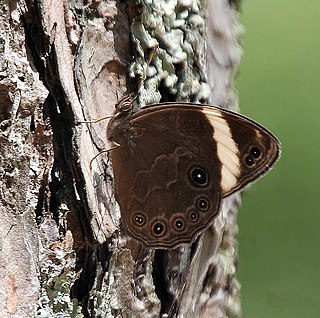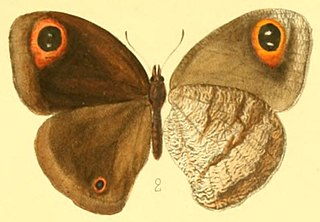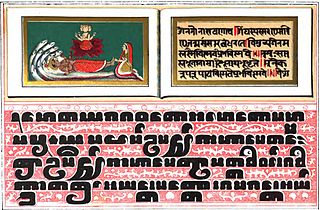
The rupee is the common name for the currencies of India, Pakistan, Indonesia, Mauritius, Nepal, Seychelles, Sri Lanka, and formerly those of Afghanistan, Tibet, Burma and British East Africa, German East Africa and Trucial States and all Gulf Arab Countries as Gulf rupee.

Byasa plutonius, the Chinese windmill, is a butterfly found in Asia that belongs to the windmills genus (Byasa), comprising tailed black swallowtail butterflies with white spots and red submarginal crescents.

Lethe is a butterfly genus from the subfamily Satyrinae in the family Nymphalidae. It includes the treebrowns, woodbrowns, foresters and their relatives. The species in the genus Lethe occur in temperate-tropical southern and eastern Asia, up to Indonesia and in North America.

Calinaga is the sole genus of the monotypic nymphalid butterfly subfamily Calinaginae. Its species occur in South Asia and Southeast Asia. The evolutionary history of Calinaga remains a mystery until today. Recent research indicated that the common ancestor of Calinaga first split in the Eocene in southern China. This was most likely due to a consequence of geological and environmental impacts of the collision of the Indian and Asian subcontinents.

Cigaritis is a genus of butterflies in the family Lycaenidae. Its species are found in the Afrotropical realm, the Indomalayan realm and adjacent regions of Asia.

Neptis is a large genus of butterflies of Old World tropics subtropics. They are commonly called sailer butterflies or sailers, or more precisely typical sailers to distinguish them from the related blue sailer (Pseudoneptis).

Lopinga is a genus of butterflies of the family Nymphalidae.

Neope is a genus of butterflies of the family Nymphalidae found in Asia.

Callerebia is a butterfly genus of the family Nymphalidae endemic to the Himalayas.

Loxerebia is a butterfly genus of the Satyrinae subfamily. The genus is confined to China, Mongolia, Burma, Thailand and Laos. Most species are endemic to China.















